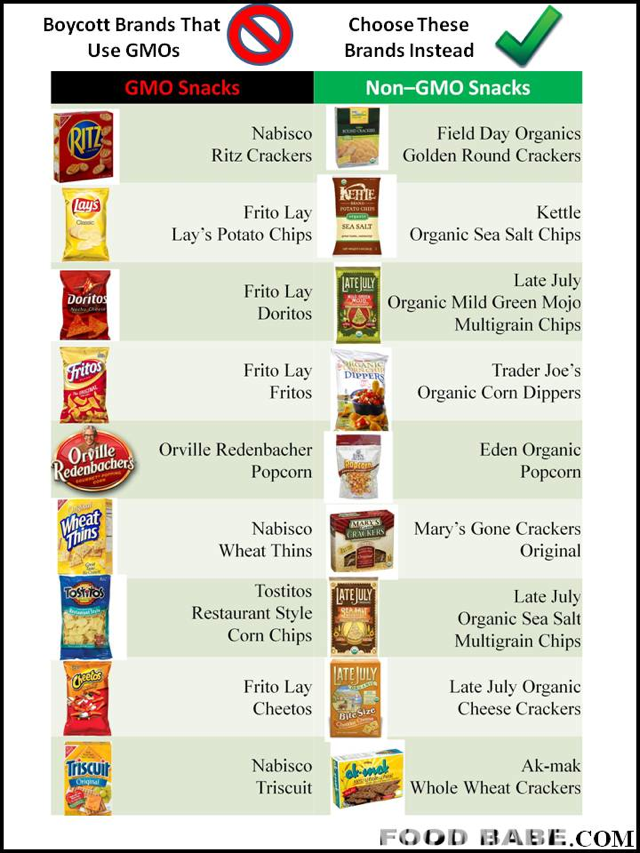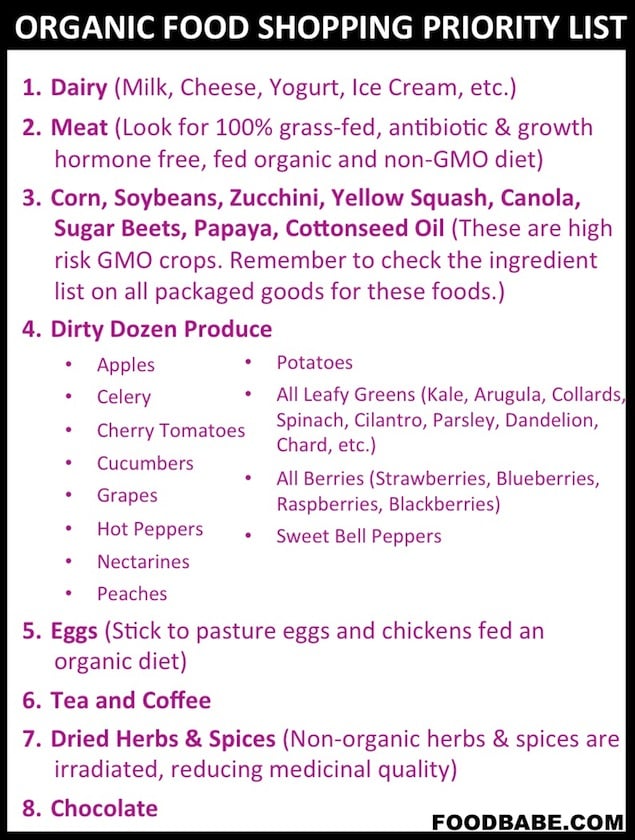What you need to know:
- Genetically modified organisms (GMOs), which are in 90% of our processed food. GMOs are foods biologically manufactured in laboratories – injected with new DNA, viruses, herbicides, insecticides and/or other chemicals – to be resistant to synthetic chemicals and are completely different than hybridizing techniques allowed by nature. As many people may know, our food is missing a very important label – one that President Obama, the FDA, and the USDA have made a concerted effort to deny us from having.
- GMOs were not studied for their safety on humans before they were approved by the FDA, and they do not require labeling in the United States. A recent French Study revealed that rats fed GMOs during the course of their lifetime and exposed to the pesticide “Round Up” developed tumors all over their bodies and in their internal organs. There has been so much outrage about the alarming results that Russia just last week banned all GMO Corn imports into their country and Europe is considering banning them too.
How to avoid consuming GMO’s when eating out:
- Unless labeled or listed organic (or from a reputable local farm the restaurant can verify doesn’t use GMO seeds or feed), I suggest avoiding these 8 genetically modified (GM) foods when dining out:
- Corn
- Soy
- Sugar (beet sugar – i.e. refined sugar)
- Papayas (from Hawaii)
- Canola
- Cotton (cottonseed oil)
- Dairy (conventional American cow’s milk and cheese)
- Zucchini/Yellow Squash
- Conventional Meat (They are fed GM corn & soy)
- GM corn, soy and canola oil are the cheapest for restaurants to purchase. Ask your server about the oils they use to make your food – this is where GMOs are hidden in almost everything from salad dressings to soups to pan or deep fried items.
- Know the exceptions: Ask if the cheese is imported. A cheese from France means you are safe from rbGH – genetically engineered growth hormone and genetically modified ingredients, as this country has banned GMOs all together.
- Look out for these hidden GM ingredients: Amino Acids, Aspartame, Ascorbic Acid, Sodium Ascorbate, Vitamin C, Citric Acid, Sodium Citrate, Flavorings (“natural” and “artificial”), High Fructose Corn Syrup, Hydrolyzed Vegetable Protein, Lactic Acid, Maltodextrins, Molasses, Monosodium Glutamate, Sucrose, Textured Vegetable Protein (TVP), Xanthan Gum, Vitamins, Yeast Products.
- Unless the sugar they use to make desserts is 100% pure cane, it’s likely from GM sugar beets
- Consider having the Non-GMO Shopping Guide in your purse or pocket that has a list of GM ingredients that you want to avoid and give it to your waiter or even call ahead. If more people did this, maybe restaurants would start to pay more attention to the products they buy.

Don’t buy, consume or keep products in your house with the following ingredients in them: BAD SUGARS
barley malt, beet sugar, brown sugar, buttered syrup, caramel, carob syrup, corn syrup, corn-syrup solids, dextran. dextrose, diastase, diastatic malt, ethyl maltol, fructose, glucose, glucose solids, high-fructose corn syrup, invert sugar, lactose, malt syrup, maltodextrin, maltose, mannitol, malitol, raw sugar, refiner’s syrup, sorbitol, sorghum syrup. sucrose, turbinado sugar, yellow sugar
Opt for: Pure Maple Syrup or Raw Honey.
8 Ingredients You Never Want to See on Your Nutrition Label

8. BHA:
This preservative is used to prevent rancidity in foods that contain oils. Unfortunately, BHA (butylated hydroxyanisole) has been shown to cause cancer in rats, mice, and hamsters. The reason the FDA hasn’t banned it is largely technical—the cancers all occurred in the rodents’ forestomachs, an organ that humans don’t have. Nevertheless, the study, published in the Japanese Journal of Cancer Research, concluded that BHA was “reasonably anticipated to be a carcinogen,” and as far as I’m concerned, that’s reason enough to eliminate it from your diet.You’ll find it in: Fruity Pebbles, Cocoa Pebbles

7. Parabens:
You’ll find it in: Baskin-Robbins sundaes

6. Partially Hydrogenated Oil:
You’ll find it in: Long John Silver’s Popcorn Shrimp, Celeste frozen pizzas

5. Sodium Nitrite:
Nitrites and nitrates are used to inhibit botulism-causing bacteria and to maintain processed meats’ pink hues, which is why the FDA allows their use. Unfortunately, once ingested, nitrite can fuse with amino acids (of which meat is a prime source) to form nitrosamines, powerful carcinogenic compounds. Ascorbic and erythorbic acids—essentially vitamin C—have been shown to decrease the risk, and most manufacturers now add one or both to their products, which has helped. Still, the best way to reduce risk is to limit your intake.You’ll find it in: Oscar Mayer hot dogs, Hormel bacon

4. Caramel Coloring:
This additive wouldn't be dangerous if you made it the old-fashioned way—with water and sugar, on top of a stove. But the food industry follows a different recipe: They treat sugar with ammonia, which can produce some nasty carcinogens. How carcinogenic are these compounds? A Center for Science in the Public Interest report asserted that the high levels of caramel color found in soda account for roughly 15,000 cancers in the U.S. annually.You’ll find it in: Coke/Diet Coke, Pepsi/Diet Pepsi

3. Castoreum:
Castoreum is one of the many nebulous “natural ingredients” used to flavor food. Though it isn’t harmful, it is unsettling. Castoreum is a substance made from beavers’ castor sacs, or anal scent glands. These glands produce potent secretions that help the animals mark their territory in the wild. In the food industry, however, 1,000 pounds of the unsavory ingredient are used annually to imbue foods—usually vanilla or raspberry flavored—with a distinctive, musky flavor.You’ll find it in: Potentially any food containing “natural ingredients”

2. Food Dyes:
Plenty of fruit-flavored candies and sugary cereals don’t contain a single gram of produce, but instead rely on artificial dyes and flavorings to suggest a relationship with nature. Not only do these dyes allow manufacturers to mask the drab colors of heavily processed foods, but certain hues have been linked to more serious ailments. A Journal of Pediatrics study linked Yellow 5 to hyperactivity in children, Canadian researchers found Yellow 6 and Red 40 to be contaminated with known carcinogens, and Red 3 is known to cause tumors. The bottom line? Avoid artificial dyes as much as possible.You’ll find it in: Lucky Charms, Skittles, Jell-O

1. Hydrolyzed Vegetable Protein:
You’ll find it in: Knorr Noodle Sides, Funyuns
You can find this article online at:
http://eatthis.menshealth.com/slideshow/8-ingredients-you-never-want-see-your-nutrition-label

http://eatthis.menshealth.com/slideshow/8-ingredients-you-never-want-see-your-nutrition-label

No comments:
Post a Comment